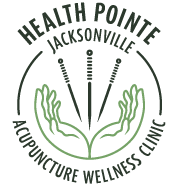Golfer’s Elbow: By far the most common cause of golfers elbow is overuse. Any action which places a repetitive and prolonged strain on the forearm muscles, coupled with inadequate rest, will tend to strain and overwork those muscles.
There are also many other causes, like a direct injury, such as a bump or fall onto the elbow. Poor technique will contribute to the condition, such as using ill-fitted equipment, like golf clubs, tennis racquets, work tools, etc. While poor levels of general fitness and conditioning will also contribute.
Symptoms:Pain is the most common and obvious symptom associated with golfers elbow. Pain is most often experienced on the inside of the upper forearm, but can also be experienced anywhere from the elbow joint to the wrist.
Weakness, stiffness and a general restriction of movement are also quite common in sufferers of golfers elbow. Even tingling and numbness can be experienced.
Prevention:There are a number of preventative techniques which will help to prevent golfers elbow, including bracing and strapping, modifying equipment, taking extended rests and even learning new routines for repetitive activities. The following preventative steps will help you avoid this sport-limiting injury and allow you to remain on the golf course painfree:
Before any activity be sure to thoroughly warm up all the muscles and tendons which will be used during your sport or activity.
Flexible muscles and tendons are extremely important in the prevention of most strain or sprain injuries. When muscles and tendons are flexible and supple, they are able to move and perform without being over stretched. If however, your muscles and tendons are tight and stiff, it is quite easy for those muscles and tendons to be pushed beyond their natural range of movement. When this happens, strains, sprains, and pulled muscles occur. To keep your muscles and tendons flexible and supple, it is important to undertake a structured stretching routine.
How to Stretch
Based on the research, the best time to stretch is either after a workout, when the soft tissues are warm and pliable, or as a stand-alone workout that won’t be followed by anything powerful or intense. For best results warm up lightly in a way that gently introduces your muscles to the upcoming activity, and save your stretching for after the activity is over. On “off” days, or “stretch only” days begin with a warm up walk of about 5 minutes. Then you may begin 5-10 minutes of stretching before you perform your bike/swim/run workout. All stretches are done SLOWLY, without bouncing. Hold each stretch 10-30 seconds. Go to the point you feel mild tension, relax as you hold the stretch. The feeling of tension should subside as you hold the position. If it does not subside, ease off slightly and find a degree of tension that is comfortable.
Breathing
Should be slow, rhythmical and under control. Exhale as you perform the stretch, then breath slowly as you hold each stretch. DO NOT hold your breath- your muscles require oxygen in order to allow them to elongate. If a stretch prevents you from breathing- ease off and reduce the stretch.
Why Stretch?
WStretching, because it relaxes your mind and tunes up your body, and should be a part of your daily life. You will find that regular stretching will reduce muscle tension, increase range of motion, prevent injuries, prepare you for activity, develop body awareness, promotes circulation, and just feel good. Proper stretching means stretching within your own limits, relaxed, and without comparisons.
By making the most of each training session, listening to your body, stretching, and utilizing your Health Care Team (Physician, PT, Acupuncturist, Massage Therapist) effectively, you can recover at infinitely quicker rates to remain in, or return to, the sport you love.
For further information please contact: Julee Miller AP, DOM, LMT (904) 448-0046/ jmacupunture@hpjax.com
Good Health. Good Sports. Good Life.




About The Author: Julee Miller
More posts by Julee Miller